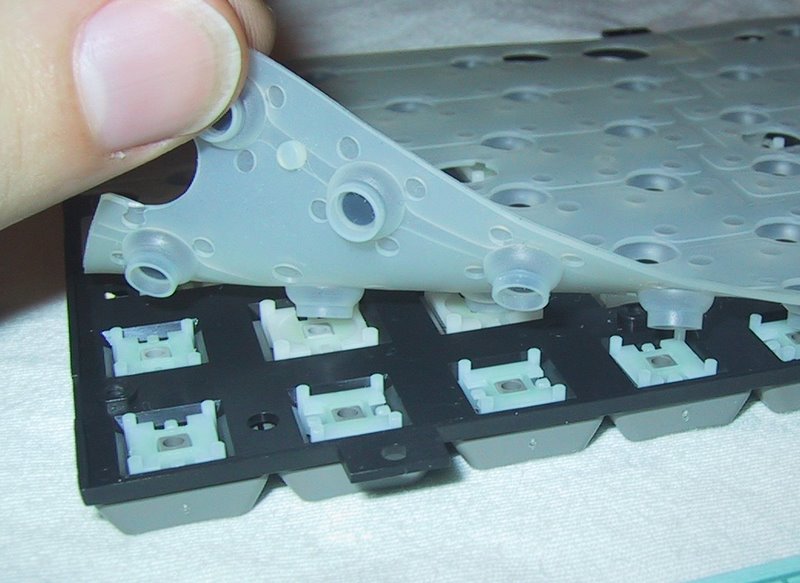Discover the Future of Control Interfaces: Why Membrane Switches Are Getting Popularity
As industries progressively prioritize effective and user-friendly control interfaces, membrane buttons are arising as a compelling solution that integrates capability with layout versatility. With the surge of clever technology and sustainability concerns, the capabilities and innovations surrounding membrane layer switches over warrant better assessment.
Comprehending Membrane Layer Buttons
Membrane layer buttons are essential parts in modern-day electronic tools, serving as user interfaces in between makers and customers. These buttons are composed of several layers, commonly consisting of a graphic overlay, a spacer layer, and a circuit layer.

Sturdiness is one more key function, as membrane layer buttons can be developed to stand up to ecological variables such as moisture, dirt, and chemicals. This strength makes them suitable for applications in extreme problems. Generally, understanding the framework and function of membrane switches is essential for valuing their duty in the evolution of user interfaces in today's technology-driven globe.
Secret Advantages of Membrane Layer Switches
Using a series of advantages, membrane layer switches have ended up being a favored option in numerous applications (Membrane Switches). One of the primary benefits is their small layout, allowing producers to enhance room in gadgets without compromising functionality. Membrane layer switches are light-weight, which is especially useful in mobile electronic gadgets

Additionally, these buttons offer outstanding longevity. Constructed from versatile products, they are immune to dirt, moisture, and a range of ecological elements, making them suitable for harsh problems. This resilience often converts right into a much longer lifespan compared to traditional mechanical buttons.
Furthermore, membrane changes enable smooth combination of symbols and graphics, offering visual adaptability and boosting individual experience. Modification choices are comprehensive, enabling brand names to develop special interfaces that align with their product identification.
The level surface area of membrane changes stops the build-up of dust and grime, making them perfect for sanitary settings. Membrane buttons are affordable, as they can be created in high volumes at lower expenses, making them available for a broad variety of markets.
Applications Across Industries

A myriad of sectors are progressively taking on membrane switches as a result of their adaptability and capability. These control interfaces are specifically prevalent in the vehicle field, where they are made use of in control panels and infotainment systems, giving a sleek and straightforward user interface. In the medical area, membrane layer switches over promote the operation of diagnostic tools and patient tracking systems, making certain integrity and convenience of use in crucial situations.
In addition, the customer electronics market take advantage of membrane layer switches in devices such as microwaves and push-button controls, permitting structured layout and boosted resilience. Membrane Switches. The aerospace market additionally uses membrane switches in cabin controls, where room restrictions require portable and reliable style services
Furthermore, the commercial industry uses membrane layer switches in equipment control panels, offering resilience versus harsh atmospheres and guaranteeing functional performance. Learn More Retail environments have actually welcomed membrane layer switches in point-of-sale systems, boosting customer interaction while preserving aesthetic appeal.
Design Trends in Membrane Buttons
Evolving along with technological advancements, layout fads in membrane buttons are increasingly concentrated on enhancing individual experience and visual allure. Modern membrane layer switches are being designed for simplicity and user-friendly use, allowing users to browse interfaces easily. This change in the direction of user-centric style highlights tactile feedback, guaranteeing that individuals get prompt confirmation of their activities.
In addition, personalized graphics and colors are coming to be typical functions in membrane layer switch layouts. This adaptability permits makers to develop customized user interfaces that align with branding and particular user demands. The incorporation of backlighting is one more noticeable pattern, as it not just enhances visibility in low-light conditions yet also includes a visually striking component to the overall style.
Additionally, the fad in the direction of thin and light-weight materials is acquiring grip, enabling sleeker designs that can perfectly incorporate into numerous applications. This shift not only improves looks yet additionally adds to the total capability and sturdiness of the buttons. Lastly, green products are significantly being utilized, mirroring a wider activity in the direction of sustainability in product style. These layout patterns collectively emphasize the growing significance of incorporating type and function in the advancement of membrane buttons, eventually enhancing the individual experience.
Future Overview for Control Interfaces
The future of control interfaces is positioned for significant transformation as emerging modern technologies remain to reshape individual interactions throughout various tools. The integration of advanced products, such as conductive inks and flexible electronics, will certainly improve the convenience and performance of membrane buttons, making them significantly versatile to a series of applications. Additionally, the surge of the Internet of Points (IoT) will drive demand for more instinctive, user-friendly user interfaces that can flawlessly integrate with smart tools.
As expert system and machine learning progress, control interfaces will likely incorporate more customized features, enabling users to connect with devices in means that click to find out more are customized to their preferences and behaviors (Membrane Switches). This shift in the direction of user-centric layout will position membrane layer switches as a key player in the market, specifically in sectors like health care, automobile, and consumer electronics
Additionally, the push for sustainability will motivate suppliers to check out environment-friendly materials and production techniques, guaranteeing that the future of control user interfaces straightens with environmental considerations. On the whole, as modern technology proceeds to advance, membrane layer switches will certainly come to be progressively advanced, paving the means for ingenious control services that boost customer experience and operational efficiency across diverse sectors.
Final Thought
In verdict, the enhancing fostering of membrane layer switches over highlights their significance in the evolution of control interfaces. As straightforward interfaces come to discover this be vital in the context of IoT and AI advancements, membrane buttons are placed to play an important role.
As industries increasingly prioritize effective and easy to use control user interfaces, membrane buttons are arising as an engaging service that combines capability with style versatility.Sturdiness is another vital feature, as membrane layer switches can be developed to withstand environmental elements such as dampness, dust, and chemicals.Developing together with technological developments, design trends in membrane layer switches are significantly focused on enhancing individual experience and visual charm. Modern membrane layer buttons are being developed for simpleness and intuitive usage, permitting users to browse interfaces effortlessly. These layout patterns collectively emphasize the growing value of combining form and function in the development of membrane layer switches, ultimately enhancing the user experience.
 Haley Joel Osment Then & Now!
Haley Joel Osment Then & Now! Devin Ratray Then & Now!
Devin Ratray Then & Now! Brandy Then & Now!
Brandy Then & Now! Hailie Jade Scott Mathers Then & Now!
Hailie Jade Scott Mathers Then & Now! The Olsen Twins Then & Now!
The Olsen Twins Then & Now!